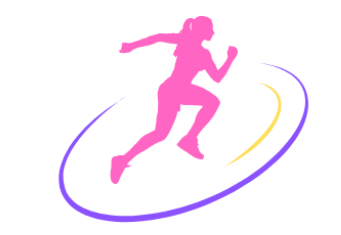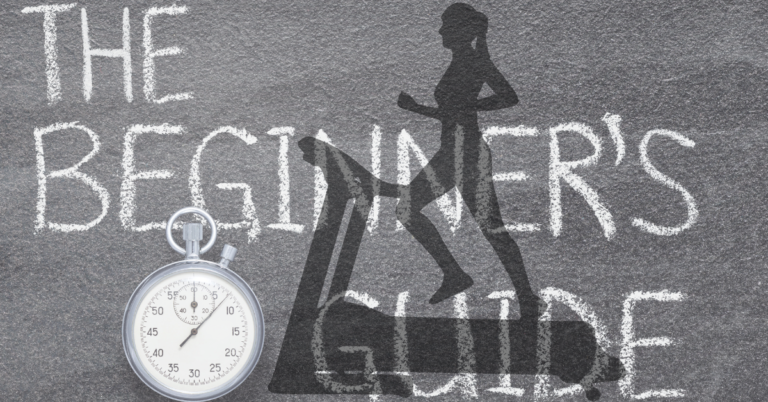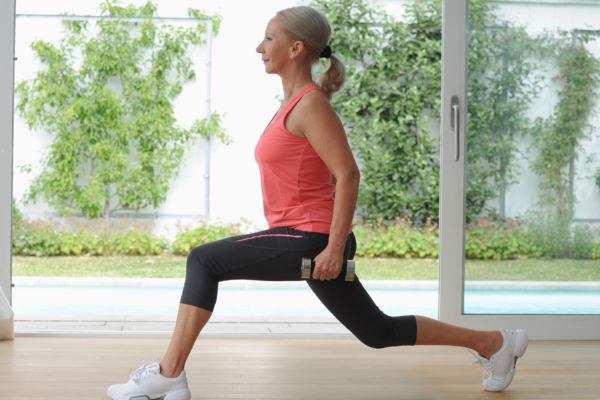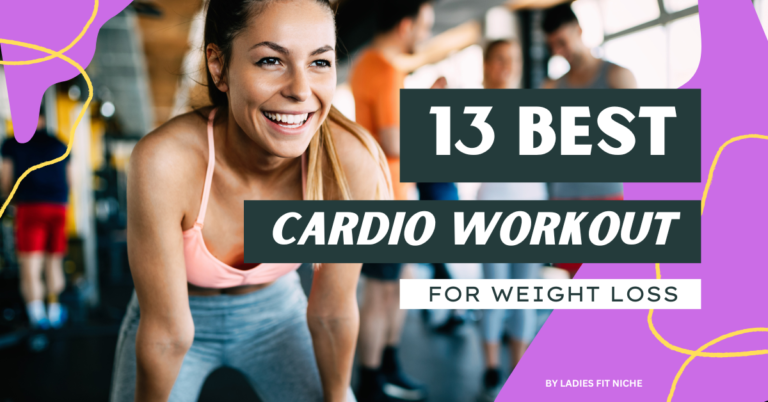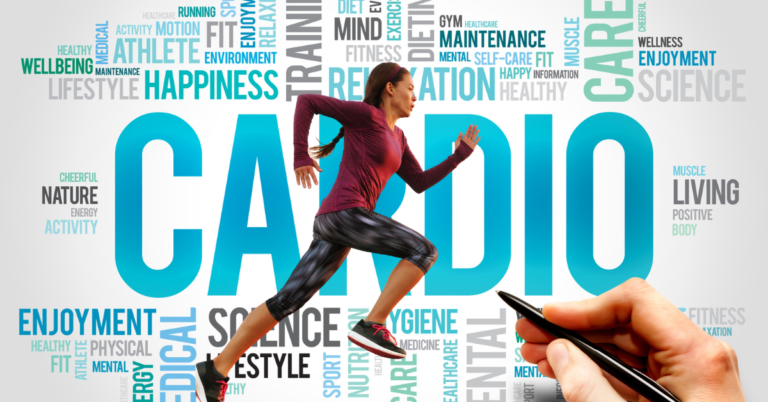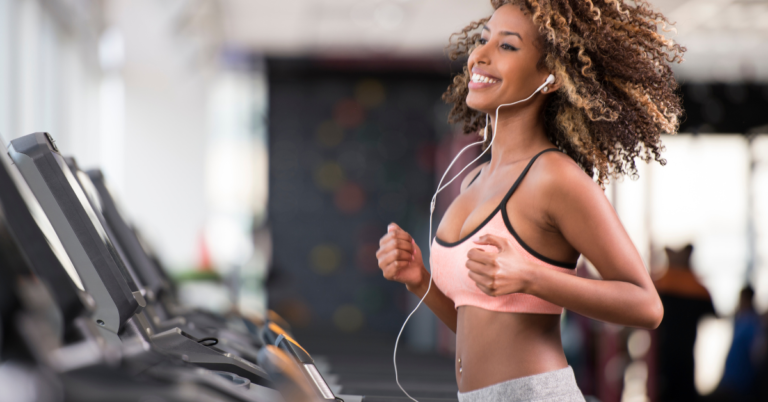The Ultimate Guide to Bodyweight Exercises for Women over 40: Tips and benefits
Women over 40 are always looking for new ways to keep their body in shape. Exercising and staying fit is a top priority, but sometimes it can be difficult to find the right workout routine. Bodyweight exercises are an excellent option for women over 40 who want to stay fit without spending time at the gym.
These exercises don’t require any special equipment; all you need is your own bodyweight! You can do them anywhere, anytime, which makes them perfect for busy schedules. And best of all, they’re low-impact, so you can avoid the strain associated with more intense activities like running or weightlifting.
Whether you’re a beginner or an experienced athlete, bodyweight exercises can help you get stronger and more toned without putting too much strain on your joints and muscles. Read on to learn more about how these exercises can benefit women over 40 — and how to start doing them today!
Benefits Of Bodyweight Exercises For Women Over 40
Bodyweight exercises offer a multitude of benefits for women over 40. They are low-impact, making them easier on the joints than high-impact activities. Bodyweight exercises can build strength and improve balance, agility, and coordination. What’s more, these exercises can be done without any equipment or at home with minimal equipment.
A regular routine incorporating bodyweight exercises can help reduce the risk of age-related illnesses such as arthritis and osteoporosis. This type of exercise will also increase bone density to help protect against injuries from falls. Additionally, bodyweight training helps to increase cardiovascular fitness levels while simultaneously providing a great way to relieve stress.
In addition to improving overall health, bodyweight exercises have been shown to improve posture and flexibility which can help make everyday activities easier to perform. Furthermore, they are often less expensive than gym memberships or buying expensive equipment for home use. With all these benefits in mind, it’s no wonder why bodyweight exercise is becoming increasingly popular among women over 40 who want to stay fit and healthy.
Types Of Bodyweight Exercises

Bodyweight exercises are an excellent way for women over 40 to maintain, or even improve their physical fitness. These exercises can help build strength and improve overall balance and flexibility. Plus, bodyweight exercises don’t require any equipment, making them convenient and easy to do from the comfort of your own home.
There are a variety of bodyweight exercises that can be done to target different muscle groups in your body. Squats, lunges, and push-ups are great for strengthening the lower body muscles like glutes, quads, and hamstrings. Planks can help strengthen the core muscles while shoulder presses target the shoulders. High knees and jumping jacks are also good for getting heart rate up when doing cardio workouts.
Another benefit of these types of exercises is that they can be tailored to your own fitness level. If you’re just starting out with exercise after a long break it’s best to start slow by using modified versions of different exercises until you gain back your strength and endurance. As you progress you can gradually increase reps or use variations of each exercise to make it more challenging. With consistent practice and commitment, you will soon see results in your overall health and well-being!
Bodyweight exercises suitable for women over 40:
| Exercise Type | Exercise Name | Description |
|---|---|---|
| Warm-up | Dynamic Stretching | Perform dynamic stretches, such as leg swings and arm circles, to increase flexibility. |
| Marching in Place | Lift your knees one at a time, as if marching, to warm up your hip flexors and leg muscles. | |
| Lower Body | Bodyweight Squats | Stand with feet shoulder-width apart, squat down, then push through your heels to stand up. |
| Glute Bridges | Lie on your back, feet flat and hip-width apart, lift your hips, squeeze your glutes, and lower. | |
| Step-Ups | Step up onto a sturdy platform or staircase, focusing on engaging your glutes and quads. | |
| Upper Body | Wall Push-Ups | Stand facing a wall, place your hands on the wall, and perform push-ups with a controlled motion. |
| Inverted Rows | Using a sturdy table or bar, lie on your back, grip the edge, and pull your chest towards it. | |
| Core | Modified Plank | Hold a plank position on your forearms and knees, maintaining a straight line from head to knees. |
| Bird Dog | On hands and knees, extend your opposite arm and leg, hold briefly, then alternate sides. | |
| Dead Bug | Lie on your back, knees bent, and slowly lower one leg and the opposite arm, then alternate. | |
| Balance & Agility | Side Leg Lifts | Stand tall, hold onto a support if needed, and lift one leg out to the side, then switch legs. |
| Heel-to-Toe Walk | Walk in a straight line, placing the heel of one foot directly in front of the toes of the other. | |
| Flexibility | Cat-Cow Stretch | On hands and knees, alternate between arching and rounding your back to stretch your spine. |
| Seated Hamstring Stretch | Sit with one leg extended, reach for your toes, and hold the stretch, then switch legs. |
These bodyweight exercises are designed to be low-impact and suitable for women over 40, targeting various muscle groups while focusing on flexibility, balance, and agility. Remember to consult with a healthcare professional before starting any new exercise routine, and always listen to your body, modifying exercises as needed.
Equipment Needed For Bodyweight Exercises
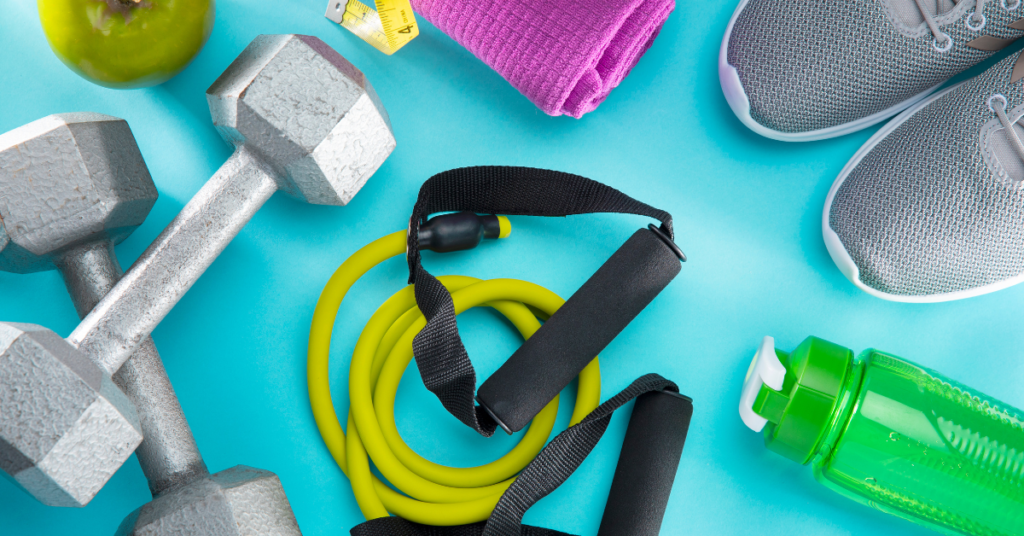
Bodyweight exercises are a great way for women over 40 to stay in shape without having to invest in expensive gym equipment. However, there are some basic pieces of equipment that can help make bodyweight exercises more effective and enjoyable. These items can be found relatively inexpensively at most sporting goods stores or online retailers.
The most important piece of equipment is a good quality yoga mat or exercise mat. This will give you a comfortable surface to do your bodyweight exercises on, as well as providing cushioning from the floor to protect your joints. It’s also helpful for doing any stretching or abdominal work.
Resistance bands and kettlebells are also useful additions to your bodyweight exercise routine. Resistance bands are great for adding an extra challenge to certain exercises, while kettlebells can be used for resistance training and core strengthening exercises like Russian twists. Both pieces of equipment come in various sizes and weights, so you can tailor them to your own strength level and needs.
No matter what type of bodyweight exercise you choose, making sure you have the right equipment is key for getting the most out of your workout routine. With the right tools in hand, you’ll be able to get fit and feel great – no matter how old you are!
How To Get Started With Bodyweight Exercises
Now that you have the equipment needed, it’s time to start your bodyweight exercise routine. The key is to find exercises that work best for you and challenge your body in new ways. Here are some tips to help you get started:
First, create a schedule for yourself and stick to it. This will help to keep you motivated and accountable for your workout goals. It’s also important to move slowly through the exercises so that you don’t overexert yourself or put unnecessary strain on your body. You can also break up larger exercises like squats into smaller sets of reps if needed.
Second, listen to your body and adjust your workout as necessary. If an exercise feels too challenging or uncomfortable, take a break or modify the exercise until it feels better. Additionally, make sure to stay hydrated during workouts and take breaks when needed.
Finally, focus on form rather than speed or how many reps you can do at once. Proper form is essential in order to maximize the benefits of each exercise while avoiding injury. Always keep proper posture and engage your core throughout every movement. With consistent practice, you’ll soon be able to progress more quickly without sacrificing form or safety.
Common Mistakes And How To Avoid Them

When it comes to working out with bodyweight exercises, many women over 40 make some common mistakes. The first mistake is not warming up properly. Not taking the time to warm up your muscles can lead to muscle strains and tears. To avoid this, take a few minutes to do some light stretching or walking before starting your workout.
Another common mistake is not listening to your body. It’s important to know your limits and not push yourself too hard. Many women mistakenly think that they need to do more reps or lift heavier weights in order to see results quickly. Instead, take it slow and start at a level that you can handle comfortably. Once you feel stronger, then gradually increase the intensity of your workouts as you progress.
Lastly, some women may skip rest days altogether when they are working out with bodyweight exercises. Rest days are just as important as your workout days since they give your body time to recover and repair itself so that it can be ready for the next workout session. So make sure that you plan rest days into your weekly routine in order to get the most out of your workouts and avoid injury.
Benefits Of Working With An Exercise Coach
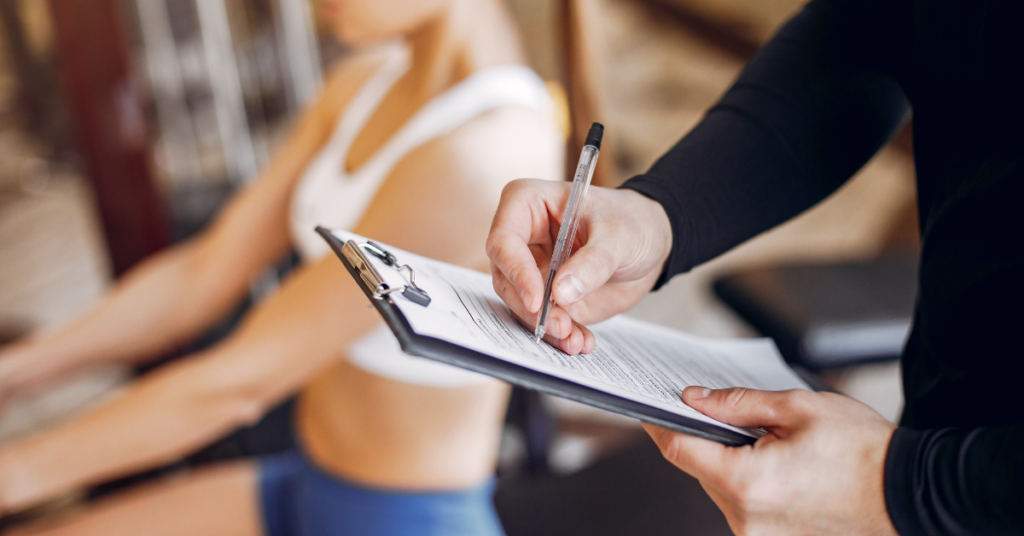
One benefit of working with an exercise coach for women over 40 is that they can provide personalized guidance. A coach can help identify the best exercises and strategies to achieve individual goals. They can also provide motivation and accountability, which is especially important when starting a new fitness routine. Working with an exercise coach is beneficial because it helps ensure the program is tailored to each individual’s needs, abilities, and physical limitations.
Coaches can also provide education about movement mechanics and proper form, which can help maximize the effectiveness of the exercise program and reduce the risk of injury. This is especially true for women over 40 who may have been inactive for a period of time or have never exercised before. Coaches can also provide guidance on other topics such as nutrition, sleep hygiene, stress management, and more.
Having an experienced professional by your side throughout your journey gives you the confidence that you’re doing things right and that you’ll get results faster than if you try to figure it all out on your own. With their support, you’ll be able to stick to a program long enough to see real progress in your strength and overall fitness level.
Incorporating Other Activities Into Your Fitness Regimen
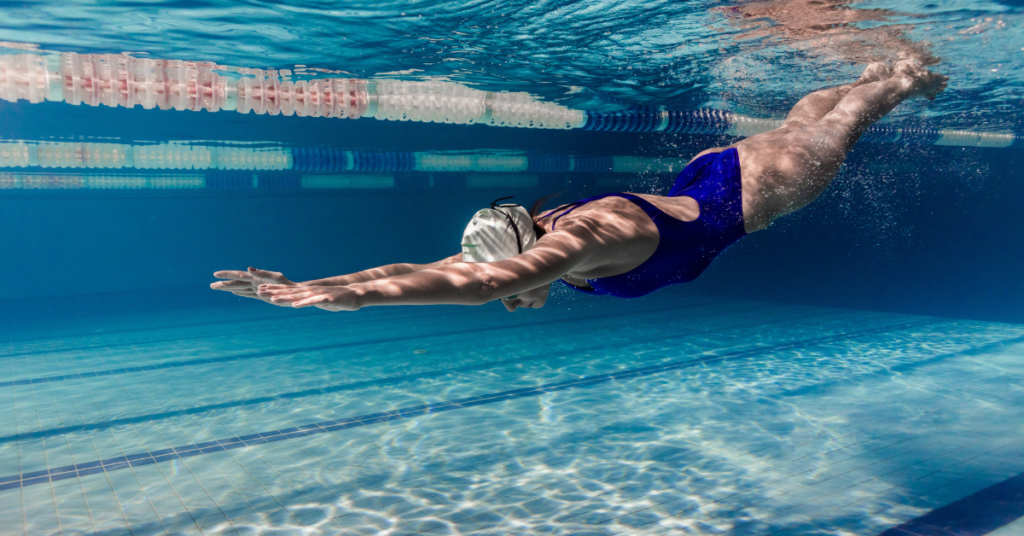
In addition to bodyweight exercises, there are other activities that can help women over 40 stay in shape. Low-impact activities like swimming or yoga can be especially helpful for those with joint issues. These activities provide an alternative to more intense workouts and are great for increasing range of motion and flexibility. Regular practice of both low-impact and bodyweight exercises can have a big impact on overall health, helping to reduce stress and improve balance.
For those who want more of a challenge, high-intensity interval training (HIIT) is another option. HIIT combines short bursts of high-intensity activity with periods of rest or low intensity exercise. This kind of workout helps to increase strength, endurance, and metabolic rate without putting undue strain on the joints. It’s also incredibly time efficient, as a single HIIT session can take as little as 20 minutes.
Women over 40 should always prioritize safety when choosing an exercise program or activity. Start slowly and gradually increase the intensity level as you become more comfortable with your movements. If you don’t feel up to exercising one day, don’t push it; instead, opt for light stretching or gentle walking until you feel ready to resume your regular routine. Remember: any movement is better than none at all!
Nutrition And Hydration For Maximum Performance

Now that you’ve found activities that fit your lifestyle and fitness goals, it’s important to be mindful of how nutrition and hydration can help you achieve maximum performance. Eating right and staying properly hydrated is key for any workout, but especially for bodyweight exercises that require strength and endurance.
It’s important to eat a balanced diet with plenty of fruits, vegetables, lean proteins, healthy fats, and whole grains. It’s also recommended to stay away from processed foods as much as possible. A good rule of thumb for women over 40 is to make sure that at least half of the plate consists of fresh fruits and vegetables. Eating a variety of foods will also ensure you get all the essential vitamins and minerals you need.
When it comes to hydration, it’s important to drink plenty of water throughout the day in order to stay well-hydrated while exercising. Drinking water before, during, and after a workout helps the body maintain proper temperature levels and aids in muscle recovery afterwards. Women over 40 should aim for 8-10 glasses per day depending on their activity level.
Adequate nutrition and hydration are necessary elements in any exercise routine but particularly when engaging in bodyweight exercises. Eating right and staying hydrated helps maximize performance while also helping prevent injury or discomfort during exercise.
Rest And Recovery Tips

Rest and recovery is just as important as the exercise itself. It gives your body time to heal and build strength so you can keep pushing yourself to reach your goals. As a woman over 40, rest and recovery are especially important for avoiding injury or fatigue.
The amount of rest needed varies from person to person, but in general, it’s important to get at least eight hours of sleep each night. If you’re feeling particularly sore after a workout, allow extra time for rest until you feel recovered. Taking breaks throughout the day can also help you stay energized and avoid burnout.
It’s important to listen to your body when it comes to rest and recovery. Give yourself permission to take a day off if you need it, or adjust your routine if something isn’t working for you. That way, you can maintain motivation while staying safe and healthy as you progress with your bodyweight exercises over time.
Long-Term Goals And Progress Tracking
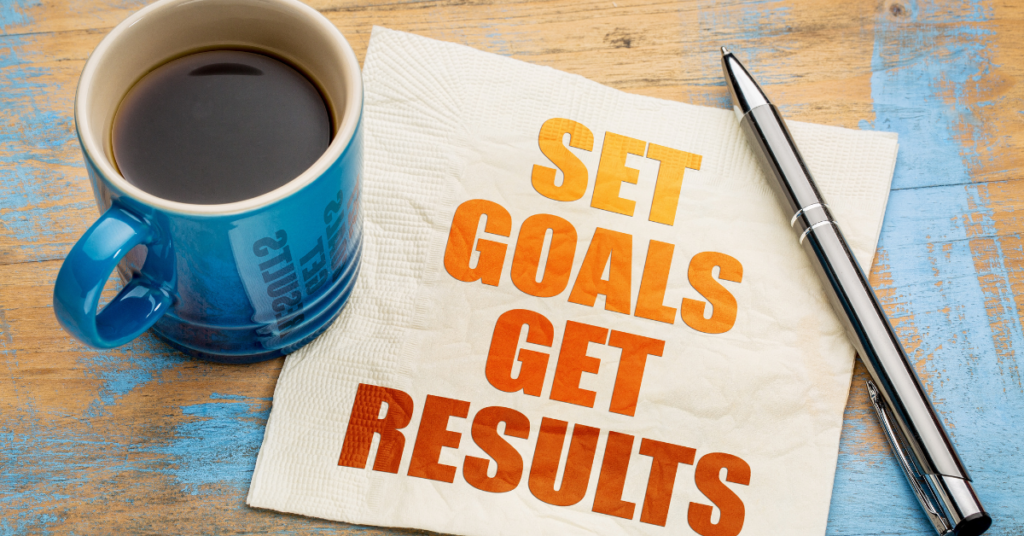
Having a plan in place to rest, recover, and take care of your body is an essential part of improving your physical health. The next step is to create long-term goals and track your progress towards them. This will help you stay motivated and keep you on the right path to reach your desired outcomes.
When creating your long-term goals for bodyweight exercises, it’s important to set realistic expectations for yourself. Start by setting smaller, achievable goals that will help you build up to where you want to be in the future. For example, if you are a woman over 40 starting out with bodyweight exercises, aim for completing one full workout a week, then slowly increase the number of workouts as you become more comfortable with the movements. You can also set yourself weekly challenges like increasing reps or trying new exercise variations each time.
By tracking your progress and making adjustments along the way, you’ll be able to monitor how far you have come and how much further there is to go until reaching your goal. Celebrating small victories is something that should not be overlooked as it can provide motivation when things get tough. Additionally, having something tangible that shows how much progress has been made can make the entire journey more enjoyable and rewarding.
It’s easy to become overwhelmed by long-term goals but breaking them down into smaller steps can help keep things manageable and make it easier for you stick with it over time. With this approach, before long, achieving those big milestones won’t seem as daunting anymore!
Frequently Asked Questions

What Is The Maximum Amount Of Bodyweight Exercises That Should Be Done In A Day?
When it comes to bodyweight exercises, there is no one-size-fits-all answer for how much should be done in one day. It depends on a person’s overall fitness level and goals. However, it’s important to remember that too much exercise can be detrimental to your health. For women over 40, the maximum amount of bodyweight exercises that should be done in a day will depend on their individual needs.
It is important to consult with a doctor or certified trainer before beginning any exercise program, especially if you are over 40 years old. This is because as we age our bodies become more susceptible to injury and strain due to decreased flexibility and strength in the muscles and joints. A doctor or trainer can help assess your individual needs and provide advice about an appropriate exercise program for your specific requirements.
When designing a bodyweight workout plan for women over 40, it’s important to focus on low impact movements rather than high intensity workouts like running or jumping jacks. Low impact exercises such as walking, yoga poses, and light weight lifting can help maintain muscle tone without putting too much strain on the body. It is also important to prioritize rest days in order to give the body time to recover from any physical activity. Depending on your fitness level and goals, two or three days per week of bodyweight exercises may be enough for most people over 40.
By taking into account each person’s individual needs and limitations, it’s possible to find an optimal amount of bodyweight exercises that can help keep you healthy while meeting your fitness goals. Taking time to consult with a doctor or trainer can ensure you receive personalized advice tailored specifically towards your own needs and situation so that you can make informed decisions when it comes to exercising safely and effectively.
Q: Is It Possible To Gain Muscle While Doing Bodyweight Exercises?
A: When it comes to fitness, one of the most common questions is whether it’s possible to gain muscle while doing bodyweight exercises. This is a great question that requires an understanding of the fundamentals of strength training.
Bodyweight exercises are a form of strength training that use your own body weight as resistance. These exercises can be used to build strength and improve muscular endurance. The key to gaining muscle is creating progressive overload, which means increasing the intensity or difficulty of your workouts over time. Doing this will help you build more muscle mass.
When it comes to bodyweight exercises for women over 40, there are some things you should keep in mind. First, make sure you focus on quality form and use slow, controlled movements instead of rushing through your sets and reps. You should also make sure you’re getting enough rest between sets so that your muscles have time to recover and grow stronger. Finally, focus on short-term goals like doing a few extra reps per set instead of trying to do too much too quickly. By doing these things consistently and gradually increasing the intensity of your workouts, you’ll be well on your way to building muscle through bodyweight exercises!
Q: Are There Any Special Techniques To Doing Bodyweight Exercises For Women Over 40?
A: This is an important question for many people who are looking to improve their health and fitness levels. Bodyweight exercises can be effective for both men and women, but there may be some considerations that need to be taken into account when it comes to age. Women over 40 may have different needs than younger individuals, and so they may require special techniques.
The first thing that needs to be addressed is the intensity of the workout. Women over 40 may not have the same level of strength as younger individuals, and so it’s important to adjust the exercises accordingly. For example, instead of doing push-ups with your arms straight, you could do them with bent arms or on a wall or countertop. This will reduce the strain on your muscles while still providing a good workout.
The second factor that should be taken into account is flexibility. As we get older, our joints can become stiffer and more prone to injury. To ensure safety during bodyweight exercises, it’s important to include stretching and warm-up activities before each session. This will help keep your muscles loose while also improving your range of motion which can help reduce the risk of injury.
In addition to intensity and flexibility, form is another key factor in bodyweight exercises for women over 40. Proper form ensures that you are working the correct muscles in order to maximize results without risking injury. It’s also important to make sure you are using the correct technique for each exercise so that you are getting the most out of every movement. Taking a few minutes before each session to review proper form can go a long way towards ensuring safe and effective workouts every time.
By taking these factors into consideration when doing bodyweight exercises for women over 40, you can maximize results while staying safe at all times. With careful planning and dedication, anyone can achieve their health and fitness goals regardless of age or gender!
Q: Are Bodyweight Exercises Safe For Women Over 40?
A: Exercising with bodyweight is a popular choice among people of all ages. But when it comes to women over 40, there is an added layer of concern–is it safe? This is an important consideration for anyone looking to get into shape, and it’s worth examining the risks and benefits of using bodyweight exercises.
When done correctly, bodyweight exercises can be incredibly beneficial for women over 40. The main benefit is that they are low-impact, meaning that they don’t put too much strain on the joints or muscles. Furthermore, since the movements are not complicated and the weights don’t need to be adjusted often, these exercises are easy to learn and can be done anywhere.
However, it’s important to recognize that there are some risks as well. Women over 40 may not have as much strength or flexibility as younger people do, so safety should always be taken seriously when doing any kind of exercise. It’s also essential to focus on form in order to avoid injury; if something feels uncomfortable or you’re feeling pain while doing an exercise, then stop immediately and consult a physician or fitness professional before continuing with your routine.
In addition to this, make sure that you’re getting enough rest between workouts in order to allow your body time to recover properly. All in all, bodyweight exercises can be a great way for women over 40 to get fit and stay healthy if they take proper precautions and listen to their bodies while exercising.
Q: What Is The Most Effective Form Of Bodyweight Exercise?
A: Bodyweight exercises are a popular form of exercise for all ages and levels of fitness. They can be used to build strength, improve cardiovascular health, and increase flexibility. But what is the most effective form of bodyweight exercise?
There are a variety of bodyweight exercises that can be used to reach different goals. For instance, if you want to build strength and muscle mass, you can use push-ups, pull-ups, sit-ups, squats, and other compound movements. If your goal is to improve cardiovascular health or lose weight, burpees and high-intensity interval training (HIIT) workouts are good options. And for those who want to increase flexibility and mobility, yoga postures and dynamic stretches are great choices.
No matter what type of bodyweight exercise you choose, it’s important to make sure it’s tailored to your individual needs. Start by focusing on proper form when performing the exercises and gradually increasing difficulty as you get stronger. It’s also important to mix up your routine so that your muscles don’t become too accustomed to the same exercises each time you work out. This will help ensure that you’re getting maximum benefit from each workout session.
Ultimately, finding the right bodyweight exercise for you requires some trial and error as well as an understanding of how the various types of exercises work together in order to maximize their effectiveness. With dedication and consistency, however, you’ll soon find yourself reaping the full benefits of these simple yet powerful workouts!
Conclusion
Bodyweight exercises are a great way for women over 40 to stay fit. We should keep in mind that the maximum amount of bodyweight exercises that should be done in one day is three sets of 10-15 repetitions. It is possible to gain muscle while doing bodyweight exercises, but it may take some time. Special techniques can be used to make sure you get the most out of your workouts, such as focusing on form and using slow movements. Safety is always important, so it’s best to consult with a doctor before starting any exercise program. Lastly, the most effective form of bodyweight exercise will depend on individual goals and needs. Whether you’re looking to increase strength or improve overall health, there are plenty of options available. With proper planning and dedication, bodyweight exercises can help you reach your fitness goals and keep you feeling strong and healthy well into your 40s and beyond!
